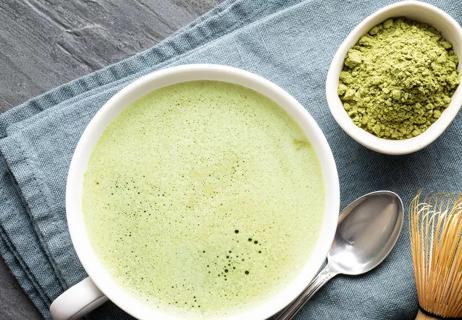Potential benefits include improved blood flow, which may help with athletic performance

Have you heard of citrulline? It’s an amino acid that you produce naturally. But it’s also in some foods, like watermelon, as well as sold in supplement form.
Advertisement
Cleveland Clinic is a non-profit academic medical center. Advertising on our site helps support our mission. We do not endorse non-Cleveland Clinic products or services. Policy
There’s a lot of hype about this supplement, especially in the fitness world, says registered dietitian Devon Peart, RD, MHSc.
“Citrulline is trendy among bodybuilders and athletes because even a small improvement in performance — even if it’s a placebo — could give them a competitive advantage.”
But what does the research say about citrulline? Is it a safe performance booster? A waste of money? A dangerous supplement? Peart explains what you need to know if you’re thinking about taking a citrulline supplement.
Citrulline is involved in your urea cycle, which gets rid of waste products by excreting them in urine (pee). It’s converted into arginine, an amino acid that produces nitric oxide, a substance that relaxes blood vessels and improves blood flow.
“The main mechanism by which citrulline could be beneficial for muscle is by increasing nitric oxide, leading to increased blood flow,” says Peart.
There are two main forms of citrulline.
The form naturally found in your body, in some foods and in supplements is L-citrulline.
There’s some research-based evidence that L-citrulline may be helpful for athletic performance because it improves blood flow to working muscles.
The potential benefit seems to apply more to anaerobic exercise such as strength training, rather than aerobic exercise, like running. Still, future research might offer more clarity.
Advertisement
One study of avid cyclers found that the group taking L-citrulline biked faster and felt less tired after cycling 4 kilometers (roughly 2.5 miles). Participants took 2.4 grams of the supplement every day for eight days before the bike ride.
Citrulline malate is also receiving some attention lately. This form is a combination of citrulline with malic acid. Malic acid is found in apples, among other fruits.
Citrulline malate is a direct precursor to nitric oxide. It’s thought that this form of citrulline could have bigger effects because it potentially increases ATP — adenosine triphosphate, or the fuel for working muscles — production and availability.
There’s some research that citrulline malate may be beneficial for muscular endurance and strength performance. But overall evidence is mixed on its effectiveness, and more research is needed.
“In the meantime, since there is a good level of evidence for L-citrulline, I recommend using that form of the supplement until there is more evidence for the use of citrulline malate,” Peart says.
If you’re looking to take citrulline in supplement form, Peart recommends taking L-citrulline rather than citrulline malate.
“There’s more evidence of L-citrulline’s benefits,” she notes. “And there’s less research on citrulline malate. The research that does exist is conflicting.”
People take L-citrulline supplements to improve blood flow, which may:
Taking L-citrulline may benefit your workout by boosting your endurance. One study looked at how L-citrulline supplements could affect athletic performance. Researchers found that when participants took 6 grams of L-citrulline for seven days, they could work harder for longer on a severe-intensity exercise test.
But a recent overview of existing research on L-citrulline and aerobic exercise came to a different conclusion. According to the review, there isn’t a clear answer to whether taking L-citrulline can help you gain a competitive edge. Some studies suggested a benefit to taking the supplement, while others showed it doesn’t make a difference.
“The average gym-goer may notice a benefit during their workout, in terms of performance,” notes Peart. “And for avid athletes who may work out multiple times a day, L-citrulline could increase your performance and help you recover faster.”
If you have high blood pressure, taking a citrulline supplement could help. An analysis of research on citrulline’s effect on blood pressure found positive outcomes in most studies.
Study participants took from 3 to 8 grams of L-citrulline a day. Researchers analyzed results anywhere from one to 16 weeks after use.
Advertisement
According to the analysis, citrulline seemed like it could significantly lower blood pressure. But researchers recommended larger clinical trials to not only confirm promising findings, but also to determine ideal dose amounts and if there were any side effects.
Have you thought about trying aphrodisiacs to spice up your sex life? Eating oysters and chocolate (in moderation) won’t hurt you. But if you’re using an aphrodisiac because of erectile dysfunction (ED), it probably won’t do much.
But some people believe citrulline is useful for ED. They theorize that because limited blood flow is one of the causes of ED — and because citrulline improves circulation — it could help.
“It’s been suggested as a possibility,” states Peart. “But the jury’s still out on that.”
In one small but promising study, 50% of the participants had positive effects. They took 1.5 grams of L-citrulline a day for a month. Twelve out of 24 people went from having mild ED to typical erectile function. Scientists recommended further research and studies in this area.
If you want to try a L-citrulline supplement, see a healthcare provider first. Supplements themselves aren’t well-regulated in the U.S., and their side effects aren’t well-documented. Plus, some supplements can interact badly with other medicines you might be taking.
Advertisement
If you’re cleared to take L-citrulline, a safe dosage is 3 to 6 grams a day. Start with the lowest amount. You can always increase the dosage to see if it affects your results if you don’t experience any side effects.
Amino acids like citrulline can cause gastrointestinal upset. That’s why it’s important to start at the smallest dose to see how your body reacts. Side effects may include:
L-citrulline is particularly abundant in watermelon. You can also boost your level of nitric oxide — a component that increases blood flow — with foods high in nitrates, including:
Scientists don’t yet agree on the benefits of citrulline, and research provides mixed results on its scientific benefits. Want a guaranteed home run? Adopting a heart-healthy lifestyle — a nutritious diet, regular exercise and no smoking — is a proven way to help you win at living your best life.
Advertisement
Learn more about our editorial process.
Advertisement

This amino acid is in lots of energy drinks, but our bodies already make all we need

Timing and pairing are important to reap the possible benefits of this amino acid

The nonessential amino acid may help with stress and depression

Health benefits + a simple recipe

It typically happens when blood flow is blocked when a limb rests in the same position too long

The flu, RSV, COVID-19, pneumonia and more typically circulate during cold weather months. I added this change

Type 2 diabetes isn’t inevitable with these dietary changes

Applying a hot or cold compress can help with pain